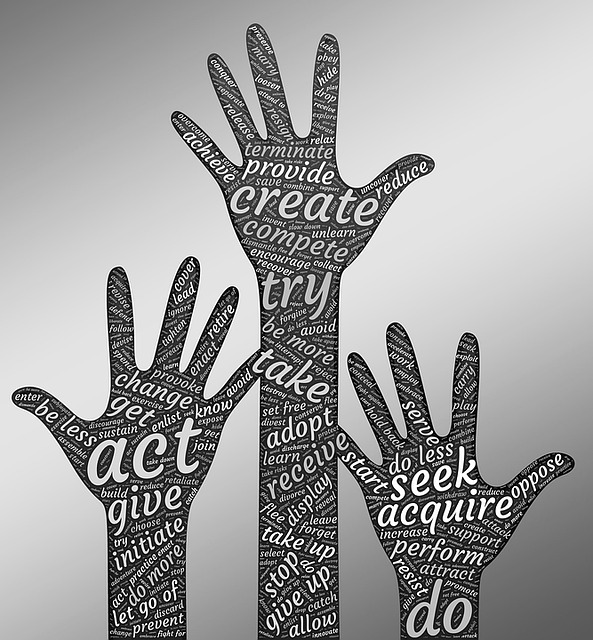Change in our personal lives and in an organisational setting can generate anxiety, fear, insecurity and anger. This discomfort can be expressed as resistance to change and lead to a wide range of unproductive behaviours that can be harmful to us as individuals as well as for the organisations we work in. William and Susan Bridges identified three broad stages of personal transition in the context of organisational change. In their 2017 book, Managing Transitions: Making the Most of Change, they explained that each of us go through these stages at different rates for different changes depending on the our perception of the impact of the changes. The three stages they identified are (1) endings – where the focus is on loss, (2) neutral zone – involves a “wait and see” orientation and (3) new beginnings – putting commitment and energy behind the change. Their book provides a range of managerial strategies that can be employed by organisations to help people transition from endings to new beginnings. They emphasize that without these strategies individuals and organisations can become stuck in either the endings stage or the neutral zone, resulting in illness and organisational decline.
Mindfulness and personal transitions during organisational change
Wendy Quan, a certified organisational change agent and creator of The Calm Monkey (Mindfulness Meditation in the Workplace), had a personal experience that gave her a deep insight into how people deal with a confronting and challenging change. She was diagnosed with cancer after many years in multiple organisational change roles. This personal challenge led her to seek out mindfulness practices, and meditation in particular, to help her deal with this devastating illness. Through her meditation practice she came to accept her illness and all that it entailed, and realised that she had a choice – she could view herself as a victim or take a proactive approach that would enable her to lead the best life possible, given her health setback.
This led to a further insight in that she realised that she could employ her understanding of organisational change and mindfulness to help others in an organisational setting. She was able to draw on the research of William and Susan Bridges and developed a refined model of personal transitions. She focused on the psychological change processes involved and identified five transition points in an individual’s psychological journey during organisational change:
- Awareness: becoming aware of your thoughts, emotions, reactions and behaviour when facing the change
- Understanding: gaining insight into the “why” of your holistic response – body and mind (recognising that this is a normal reaction to a confronting and challenging change)
- Acceptance: accepting “what is”, not denying your current reality (e.g. a changed role, loss of a job or status)
- Commitment: moving beyond acceptance to committing to adopt a positive, proactive response to improve your personal experience of the change, “taking things into your own hands” – self-management instead of reactivity
- Advocacy: promoting the change and its positive elements if your energy level and role enable this.
Research into mindfulness and personal transitions during organisational change
Wendy was able to apply her insights in her work situation to help her colleagues through difficult change processes. She moved beyond working with a small group to establishing a weekly mindfulness meditation “drop-in” where participants could share their experiences of change, both personal and organisational, and identify what they were trying to cope with and how they were going about it. After a few years, she had 185 people on this drop-in program (highlighting the psychological challenge of organisational change) and this enabled her to undertake formal research of the impact of her approach of combining mindfulness with change management insights.
Her research was published in a study titled Dealing with Change Meditation Study which can be downloaded here. Wendy indicated that her approach revolved around two key points of intervention, (1) raising awareness of the personal, holistic impact of a change process and (2) focusing on the future to develop a more constructive response so that the individual undergoing organisational change can have a better experience of the change and make decisions about their future. Participants in the study were asked to focus on a challenging change and listen three times over a two-week period to a 15-minute, guided meditation focused on positively dealing with the change.
Resources for personal transitions during organisational change
Wendy, building on her own experience of combining mindfulness and organisational change insights, has developed several resources that people can use to assist their personal change processes or to facilitate the transition for others undergoing organisational change:
- An overview of Wendy’s approach to facilitating personal change transitions during organisational change – Mindfulness Meditation & Resiliency
- A presentation giving insights for organisational change facilitators – 3 Tips for Mindfulness Facilitators at Work
- Introducing mindfulness into the workplace – Mindfulness Facilitator Certification
- Resources to assist individuals deal with difficult organisational change – Dealing with Change Toolkit
Wendy also provides a series of free and paid meditation podcasts on her website.
Reflection
I have been engaged in organisational change consultancy for over 40 years, and more recently undertaken extensive research and writing about mindfulness, as well as developing my own mindfulness practices, including meditation. However, identifying a practical approach to combining the two related skill sets has alluded me to date. Wendy, through her experience of a personal health crisis, has been able to introduce a very effective, evidence-based approach to using mindfulness to help people transition through organisational change processes. She has been able to demonstrate that as we grow in mindfulness we can become more aware of our personal response to an organisational change, develop an increased understanding of the nature of that response, increase our acceptance of our changing reality and gradually build a commitment to shaping our future in a positive and constructive way. Her work resonates with the insights and approach of Acceptance and Commitment Therapy, as well as that of Susan David who focuses on using mindfulness to develop “emotional agility”.
____________________________________________
By Ron Passfield – Copyright (Creative Commons license, Attribution–Non Commercial–No Derivatives)
Disclosure: If you purchase a product through this site, I may earn a commission which will help to pay for the site, the associated Meetup group and the resources to support the blog.









